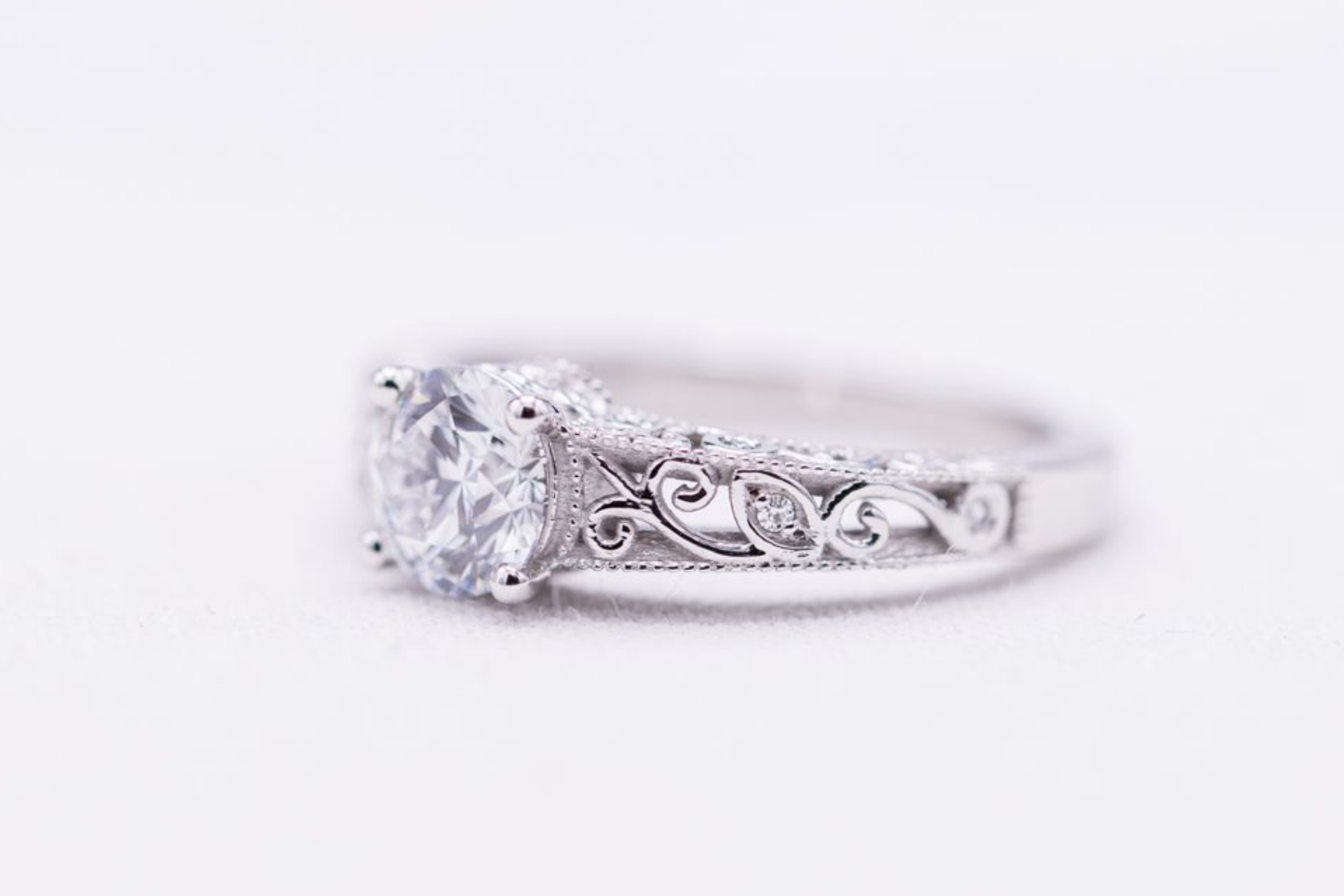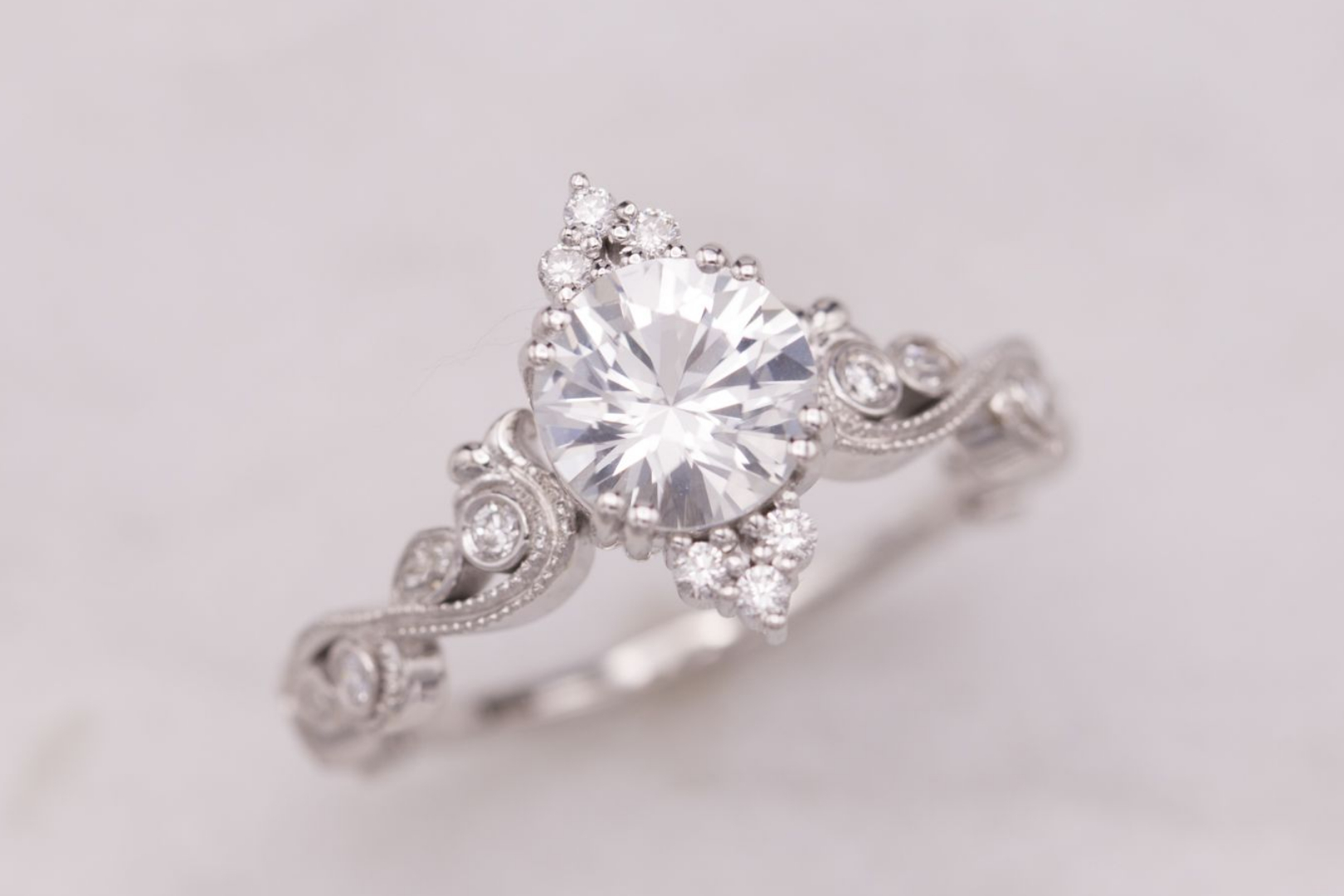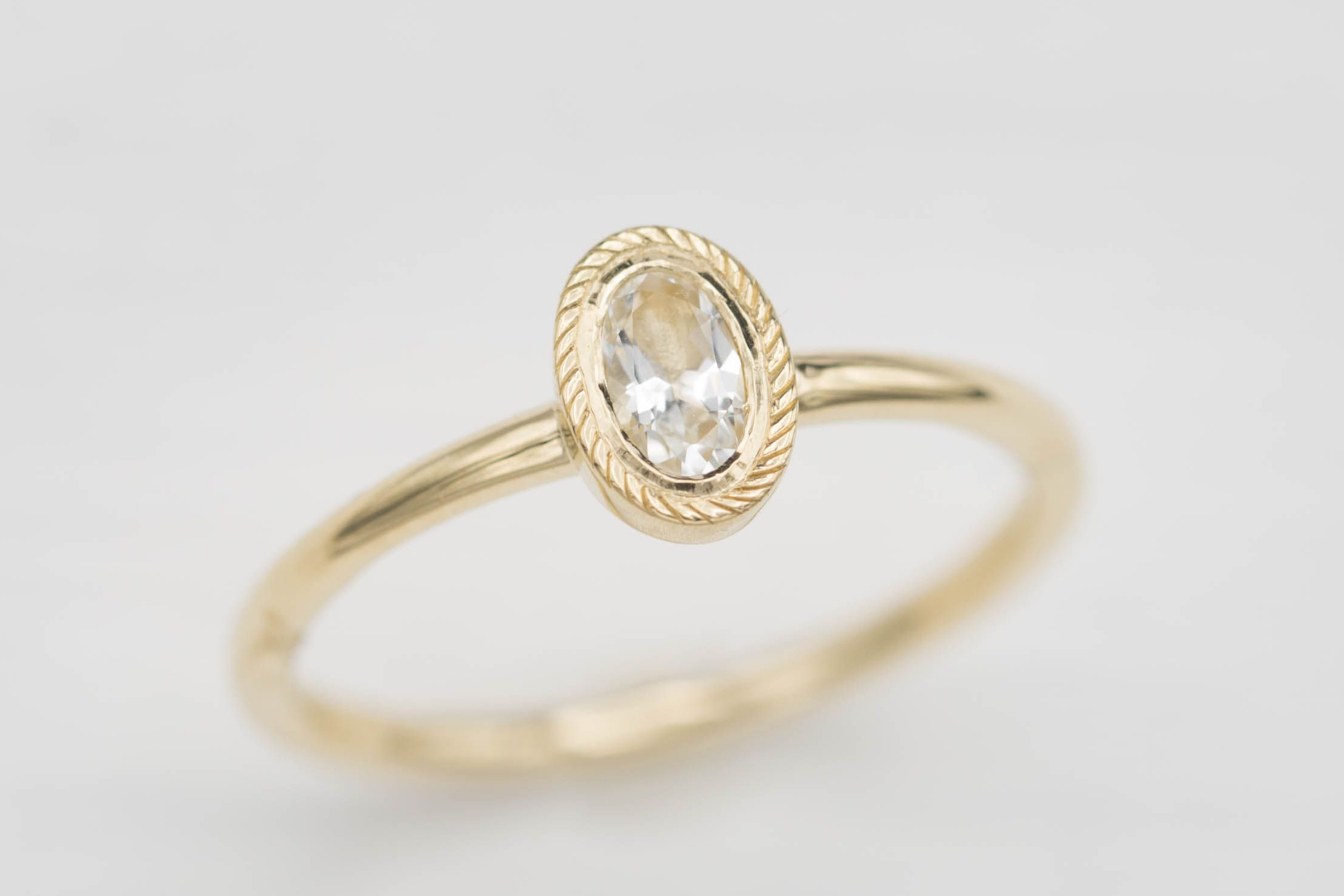Big news in the jewelry industry last week: De Beers is launching a new brand to create and sell man-made diamonds. This is a big deal for a whole bunch of reasons, not the least of which is that De Beers has long been a staunch opponent of lab-created stones and a vocal advocate for the unique value of natural, mined diamonds. Not only are they going to compete, but they’re going to sell their lab-made diamonds directly to consumers at a far lower price. So, what gives?
We’re not industry analysts, but it’s hard not to have a strong reaction to this news. Here’s where we land:
- This is great news for our customers. One great center stone option is about to get a whole lot more affordable. It sounds like De Beers won’t be selling loose lab-made diamonds (you’ll have to buy them set into their new line of fashion jewelry), but we expect their pricing to put pressure on other man-made diamond producers. We’re hoping this will drive better values for our customers.
- To our ears, the De Beers announcement contains a whole lot of “spin,” and we’re worried this will make things that much more confusing for consumers. Choosing a center stone already seems difficult, so if it was up to us, we’d love to see more facts and more transparency in the way gemstones are presented to the public.
Misleading Marketing
So, why is De Beers changing its tune on lab-made diamonds? Well, there’s been a steady increase in consumer interest in lab-made diamonds. Perhaps De Beers is genuinely interested in this business. Or maybe they’re just interested in driving down the value of lab-made diamonds to help prop up the value of their core offering: mined diamonds. Maybe a bit of both. But here are a couple quotes from Bruce Cleaver, De Beers CEO, around their announcement:
“Lab grown are not special, they’re not real, they’re not unique. You can make exactly the same one again and again.”
“We’re not grading our lab-grown diamonds because we don’t think they deserve to be graded.”
And, in a play on their old “diamonds are forever” campaign, he described their new line of lab-made diamond jewelry as “affordable fashion jewelry that may not be forever, but is perfect for right now.”
Hard not to read these quotes cynically. It’s almost like they’re going out of their way to disparage their new product. And that’s what frustrates us. Of course, it’s marketing, and every company is entitled to position their products in whatever light serves their business. We just wish there was a bit more clarity (pun intended) in the way gems are presented to the public.
And De Beers joins a long tradition of muddy messaging in this space. We regularly hear from customers who are at least a little confused about how a Nexus Diamond differs from other diamonds (hint: it’s not a diamond) or why a Swarovski Pure Brilliance Diamond is so much cheaper (hint: also not a diamond — though, to be fair, this may be more of an issue with the way some retailers present their product, their own website seems clearer that it’s a Cubic Zirconia offering). Let’s be clear: there’s absolutely nothing wrong with any of these products. As long as customers know what they’re getting, we’re happy with just about any center stone option, natural or mined, genuine or imitation. We’ve set just about every one of the alternatives in this space as a center stone, and we’ve been really proud of every one of those rings. But if you put the word “diamond” in the name of a non-diamond product, it’s going to be that much harder for consumers to know what they’re actually getting.
Mined vs. Simulant vs. Synthetic
This may be a bit too basic, but we’d like to start by clarifying the terminology. We’re going to talk about diamonds, but the same terms apply to other gems.
Mined Diamond – Also referred to as a natural diamond. This one’s the easiest to understand. It’s a diamond that was formed in nature and extracted from the ground via a mining process.
Synthetic Diamond – Also referred to as lab-made or man-made diamond. These are chemically the same as mined diamonds, but are created in a lab instead of mined from the earth. We use the analogy of ice from your freezer vs. ice formed outside by the cold. Both are chemically the same, but one was formed by a man-made process and one was formed by nature.
Diamond Simulant – Also called imitation diamonds. These are not diamonds. They have a different chemical composition, and they “simulate” the look of a diamond. This category also includes gems one might love in their own right, that just happen to look like diamonds. This is a broad category that can include natural gems (e.g. white sapphire, white zircon, white topaz) as well as lab-created gems (e.g. cubic zirconia, moissanite).
Let’s say it again: these are all great choices. We just want to make sure buyers know exactly what they’re getting.
There are trade-offs to each of the options, both in terms of their physical characteristics and the way each individual will perceive them. But there’s no chemical difference between a lab-made diamond and a mined diamond. So it’s misleading to suggest that mined “diamonds are forever” but lab made diamonds “may not be forever.” They’re going to hold up to time and wear exactly the same way.
Facts and Myths
There are plenty of differences between mined diamonds, man-made diamonds, and diamond simulants. The color, sparkle, and durability may differ. And, perhaps most importantly, the way you perceive the value of each gem may be completely different. This is a personal decision. For some, the incredible history of how natural diamonds are created makes them valuable. Others just love the way they look and really aren’t influenced by their origin. Still others find a meaningful connection to the place where a diamond was extracted from the ground. Our job is to help customers understand their options and decide what’s important to them.
Here are a few things we think everyone should understand:
1. Diamonds are rare, but not uniquely rare.
The ad campaign says “real is rare.” Lots has been written on this subject. Our take is that naturally formed diamonds are, in fact, pretty rare. Relative to other substances on Earth, diamonds are a tiny fraction. But there are lots of other gemstones that are also very rare, some far more scarce than diamonds. That said, mined diamonds were formed billions of years ago deep in the Earth’s mantle and pushed to the surface by volcanic eruptions. That’s incredibly cool and it can absolutely make a natural diamond feel special.
2. Diamonds aren’t a particularly good investment.
Some arguments about natural vs. lab-made focus on how well these gems hold value or how well they resell. These are reasonable arguments. The natural diamond market is old so its pricing is likely relatively stable. By comparison, lab made diamond pricing is still being established, so your lab-made diamond may well be worth less in a few years than when you buy it. But we’d suggest that shoppers shouldn’t think of their center stone as an investment. It’s unlikely to be a good investment, and it’s hopefully something you’ll never sell.
3. The diamond engagement ring tradition is actually quite modern.
It’s become so common to buy a diamond engagement ring, most customers view this as an old tradition. But it’s one that formed as a result of some really successful marketing by, you guessed it, De Beers in the mid-20th century. Before their incredibly effective marketing told us all that “diamonds are forever,” engagement rings frequently had colored gem center stones: sapphires, rubies, emeralds.
4. Diamonds are very durable, but hardness is not the whole story.
It’s common knowledge that diamond is the hardest naturally-occurring substance on earth. That “hardness” metric means your diamond is not going to get scratched up. But a diamond can absolutely chip. The pointed corners of a princess cut diamond, for example, can absolutely cleave if they bang into something, which is why you’ll often see them set with protective v-prongs or bezel settings.
5. Diamond simulants are all different. Learn about the gem you’re considering.
Moissanite is created in a lab, it’s almost as durable as diamond, and it’s incredibly sparkly (in fact, it has more “fire” than diamond). White sapphire occurs naturally, has the great durability of sapphire, but has a more subdued (slightly milkier, less brilliant) look. Cubic zirconia is also man-made, but it’s a bit softer and more likely to scratch and wear down over time, though not much more than emerald. There are trade-offs to each option, whether you just love zircon or you’re looking for a less expensive option to stand in for a diamond.
6. Worried about “blood diamonds?” Mining practices have improved, but you should do your research.
Numerous initiatives have worked hard to stifle exploitative and cruel mining practices and to prevent the funding of strife and conflict with the sale of diamonds. These have made a big difference, and consumer awareness has steadily increased. Most diamonds you’ll buy from a reputable retailer are Kimberley Process compliant, and therefore conflict free. That said, diamond mining is messy. Some consumers may be uncomfortable with mining because of its impact on the earth and the environment, or with the notion of purchasing gems that were mined by poor laborers in a poor country. But the opposite also holds true: some are gratified by the way their purchase supports mining communities in certain regions. You have to form your own opinions. One thing to keep in mind: it’s very hard to guarantee with absolute certainty that a diamond is conflict free. Diamonds change hands many times from the point where the rough is mined through its cutting, processing, sale and resale by dealers. By the time you’re buying a diamond, you’re trusting several middlemen to accurately report where the rough was mined, and that’s an imperfect system. There’s not a huge risk, but, for most diamonds, you can’t be 100% certain of the provenance.
Be An Informed Consumer
At the end of the day, we really believe there are no wrong choices when it comes to choosing a center stone. Don’t let the marketing sway you, and don’t let any perceived stigma change your opinion. What’s important is just that you understand the options, make a confident decision, and love the gem you choose.
And don’t mistake our open-minded view for a lack of opinions. We have these debates among ourselves all the time! Our resident long-time gem collector loves the uniqueness and history of mined gems and wouldn’t buy a lab-made gem. Others among us have happily created pieces for our loved ones with lab-created gems. Some of us love funky, included, salt-and-pepper diamonds. Others would never even consider them. Having these kinds of conversations helped us firm up our position that the decision is personal and it’s far more important for us to inform than to push our preferences.
So, how do you pick? Learn a bit about the options. Get some expert guidance. Consider your budget, appearance, durability, what you and the recipient value, and make a well-informed decision.
The great trend we’ve been seeing is that our customers do their research and are generally better informed. And there’s been a Millennial trend toward skepticism, which seems to deflate some of the marketing hype around engagement ring “norms.” There’s more willingness to consider diamond alternatives or colored gems, and there’s far less pressure to hit some magic “three months’ salary” price threshold. Best of all, there’s a growing desire to make a meaningful purchase. And we absolutely love this trend! It’s exactly the perspective we take as a custom jewelry provider. Our best customers are well-informed and open-minded, eager to create something that will be personal and lasting. Our job is to fill in any remaining knowledge gaps and let each customer decide what’s right for their ring.






